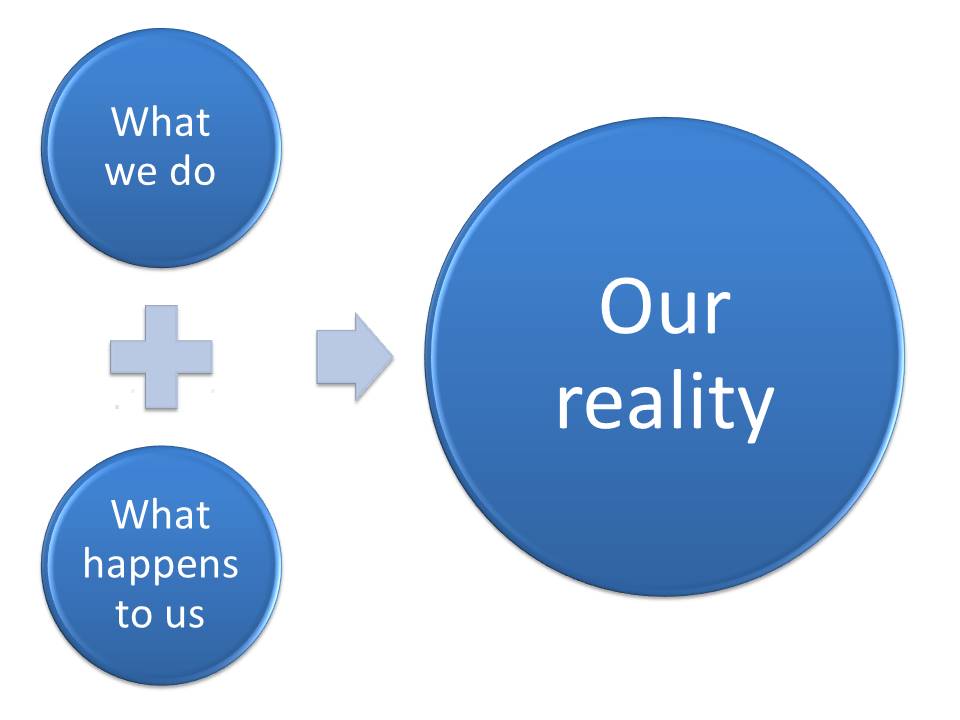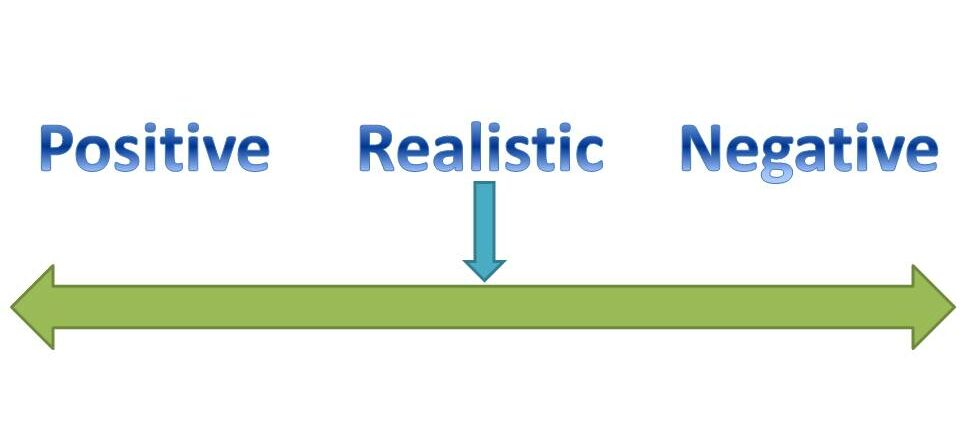Countless books have been written on the power of thoughts to shape reality. Motivational speakers and spiritual gurus keep reminding people of the importance of thoughts, particularly positive thoughts.
The idea is that if you think positive thoughts, positive things happen to you. And if you think negative thoughts, negative things happen to you.
The positive thinking movement encourages people to strive to think positively and avoid thinking negatively. This is the basis of the law of attraction which states that we attract into our life what we predominantly think and feel.
I’ve written a separate article on the psychology of the law of attraction and recently, I wrote about why people see coincidences as signs from the universe.
In this article, however, I’ll focus on why thoughts are given so much importance, especially positive thoughts. We’ll explore where thoughts come from and how influential they really are.
When you’re done reading this article, you’ll never again have to worry about thinking positively, ever.
The “Change your thoughts, change your life” philosophy
Let’s face it- many people aren’t happy with their lives. They want to turn around their lives. It’s this fundamental, pervasive and ever-present human need to change or improve one’s life that creates a breeding ground for all kinds of superstitions.
Of course, there’s nothing wrong with wanting to change or improve. The problem lies in how easily people are attracted to quick-fix solutions.
That your life is the product of your thoughts is an attractive idea because it implies all you have to do to change your life is change your thoughts. Nothing could be further from the truth. Those who teach this philosophy give thoughts much more power than they really have.
Yes, the thoughts and beliefs we have matter, but they don’t shape our reality. Our reality is the consequence of what we do plus what happens to us.

As you can see, we can’t control it all. Yes, what we do largely depends on how we think, but what happens to us isn’t always under our control. Often, we do things totally out of line with our thoughts or how we think we should behave.
People who peddle the “your thoughts shape your reality” philosophy will have you believe that you attract everything into your life with your thoughts.
The major life areas people seek improvements in are health, wealth, and relationships. If these areas of your life suck, then- according to these gurus- it’s because your thoughts suck.
Spreading ignorance in the name of positive thinking
The bottom line is: You can’t change your life by changing your thoughts. Your thoughts are not magnets that attract things and events to you. You seek those objects and events. You put yourself in situations where you’re likely to encounter those things and events.
You don’t attract anything. You seek and find.
Those who teach the law of attraction exploit people’s lack of knowledge about how the world works- how wealth, health, and relationships work.
People don’t become wealthy by thinking positive thoughts. They do it by adding value to the marketplace.
People don’t get disease by thinking negatively. Diseases have many causes, none of them involving thoughts.
And people don’t attract good relationships by positive thinking but by investing in good relationships.
Telling someone they got cancer because they thought negative thoughts is not only ridiculous but also very offensive to the sufferer. It’s victim-blaming of the worst kind.
A lot of alternative healing techniques have cropped up, promising unrealistic cures to people.
I was watching a video of this woman who claimed she could literally see the energy patterns around people. She claimed she can see these patterns of light and tell whether people are blocking happiness from their lives. She said her skill was to help people clear these blockages.
I had mixed feelings watching the video. On one hand, I wanted to burst out in laughter but on the other, seeing such peak human stupidity scared me.
Again, this goes back to how desperately people want to change their lives. This need makes them want to believe in any solution, no matter how out there it is.
Then she went on and described that experiment where they put positive words on glass jars and froze water in them. They found that ice crystals in the jar with positive words (like “Thank you”) formed beautiful shapes. While crystals in the jar with negative words (like “You make me sick”) formed ugly crystals.
I’ve seen this study quoted many times and the author or speaker will always add something like, “Your body is 70% water. Imagine what your negative thoughts must be doing to you.”
For heaven’s sake, give me a break! First of all, I’m not planning to freeze my 70% body water any time soon. Second, even if I did, and found that the ice crystals are ugly-looking, so what? Like, what are you even trying to prove?
Needless to say, the experiment was a sham. James Randi, a renowned skeptic, asked the original experimenter to repeat the experiment in controlled conditions which he refused. Steven Novella has a written an excellent piece on why the whole thing is a good example of pseudoscience.
Millions of people around the world live in poverty and misery for no fault of their own. They can change their thoughts all they want, but their circumstances just aren’t conducive for them to ‘live the good life’.
People want to think they can change their destiny just by thinking good thoughts. It’s naïve and reflects the desire of human beings to control their circumstances. The reality is you can never fully control your circumstances, not the least with your thoughts.
Our reality shapes our thoughts, not the other way round
Okay, let’s focus our attention on thoughts now. Why do we think?
Thought or cognition helps us observe, learn, plan, make decisions, and solve problems. It’s crucial to understand that thoughts, in and of themselves, are neither positive nor negative. They just are what they are.
It’s we who label certain thoughts as positive and others as negative. We label thoughts that lead to good feelings as positive and the ones that lead to bad feelings as negative.
This labeling is really where all the problems start. Because positive thinking feels good, we’re drawn to it and because negative thoughts feel bad, we try to avoid them.
We have no control over the thoughts that pop into our heads. They’re the result of how we ascribe meaning or appraise our environment. This appraisal can be conscious or unconscious.
Other times, thoughts originate from previous thoughts, what’s called the train of thought.1
If you see a snake and are startled, your mind perceived the event as dangerous. The “I’m in danger” thought pops in your mind and you spring to action.
You have no control over this “I’m in danger” thought. You can’t prevent it from popping up.
Similarly, there are other evolutionarily relevant domains of life where we have little or no control over what thoughts pop into our minds.
For example, a husband who catches his wife cheating on him might think of killing his wife and her lover. Similarly, a person who loses all their life’s savings in a stock market crash might get suicidal thoughts.
The important takeaway here is that we can’t control our thoughts. We can, at best, manage them once they’re triggered. This happens when our new thoughts override our previous thoughts.
When you see a snake and are scared, you might remember that most snakes in this area are not poisonous. This new thought overrides your previous thought and your fear decreases.
The whole aim of Cognitive Behavioural Therapy (CBT) is to teach people how to override their automatic, negative thoughts.
When people are depressed, for example, they’re flooded with negative thoughts. They don’t choose these thoughts. CBT helps them see that these thoughts are irrational.
Now, the problem with CBT, and also its major drawback, is that negative thoughts aren’t always irrational. CBT tends to equate positive thinking with rationality, which isn’t always the case. Positive thinking can be just as irrational as negative thinking.2
The dangers of positive thinking
While both positive and negative thinking have their merits and demerits, the positive thinking movement grossly overestimates the merits of positive thinking. And it pretends that positive thinking has no demerits.3
Of course, positive thinking has its benefits. Positive thinking makes us feel good, grateful, and contended. It gives us hope.
At the same time, positive thinking, especially extreme positive thinking, can have significant costs.
Those who’re unrealistically optimistic are prone to indulge in excessive risk-taking. They feel invulnerable and immune from harm.4
They believe they can do anything and when they can’t, it can be a rude awakening. Because they have such inflated, positive self-images, they don’t expect to fail.
When you’re making an important decision, you have to weigh as many costs and benefits of making that decision as you can. By anticipating what might happen in the future, including the negative, you can make a better decision today.
Positive thinking blinds decision-makers from the negative possibilities that can derail them. As a result, they find themselves unprepared for such events when they happen.
In their attempt to hide from all that’s negative, positive thinkers fail to see details and they make decisions based on incomplete information.
There are countless examples from business, politics, and other leadership settings where leaders obsessed with optimism failed to heed the “negative” warnings of their subordinates to their own peril.
Negative thinking and negative emotions are touted as enemies one should stay away from. The reality is, nobody can escape negative thinking no matter how hard they try.
The shift toward realistic thinking
When people are taught to only think positively, it creates a psychological burden on them. They strive to think positively and become worried that their thoughts aren’t positive enough.
Worse, they worry they’re attracting bad things in their life because of their negative thoughts.
People are discouraged from feeling “low frequency” emotions like guilt or shame when these are perfectly natural emotions that are even warranted in some situations.
If you commit a theft, for example, why shouldn’t you be ashamed? If you hurt a loved one, why shouldn’t you feel guilty?
It’s paradoxical how people are guilt-tripped out of feeling guilt.
The reality of the human condition is that you’re going to feel the full range of emotions- from positive to negative. The goal shouldn’t be to avoid negative thoughts and emotions, but to manage them.
Drop the labels positive and negative as much as you can and ask yourself this:
“Are my thoughts and emotions in alignment with reality?”
This is the best way to think about your thoughts and avoid the pitfalls of both positive and negative thinking.

Such a shift toward realistic thinking will help you course-correct when you’re being unnecessarily negative or over-optimistic.
You should strive to manage your thoughts in such a way that they’re proportionate to your reality. Yes, there will be false alarms. Sometimes your mind will lie to you and try to convince you of things that aren’t there. Sometimes it’ll give you false hope.
Your job to juxtapose your thoughts with your life situation and make sure your train of thought doesn’t get derailed from the tracks of reality.
References
- Smallwood, J., Brown, K., Baird, B., & Schooler, J. W. (2012). Cooperation between the default mode network and the frontal–parietal network in the production of an internal train of thought. Brain research, 1428, 60-70.
- Lazarus, R. S. (1982). Thoughts on the relations between emotion and cognition. American psychologist, 37(9), 1019.
- Norem, J. K., & Chang, E. C. (2002). The positive psychology of negative thinking. Journal of clinical psychology, 58(9), 993-1001.
- Collinson, D. (2012). Prozac leadership and the limits of positive thinking. Leadership, 8(2), 87-107.

